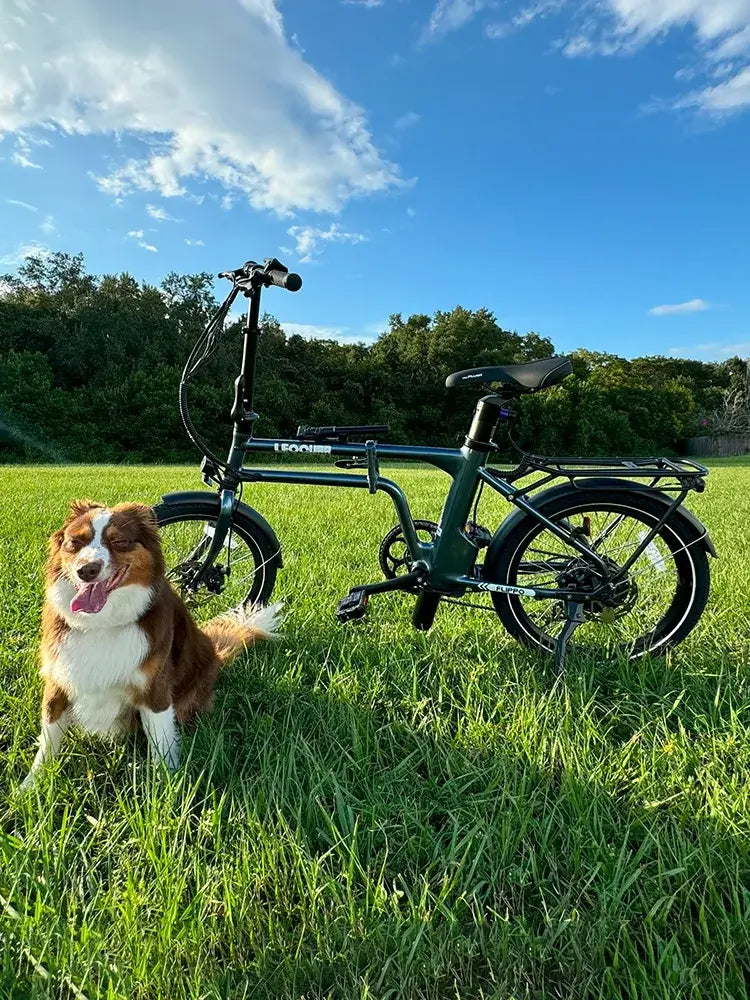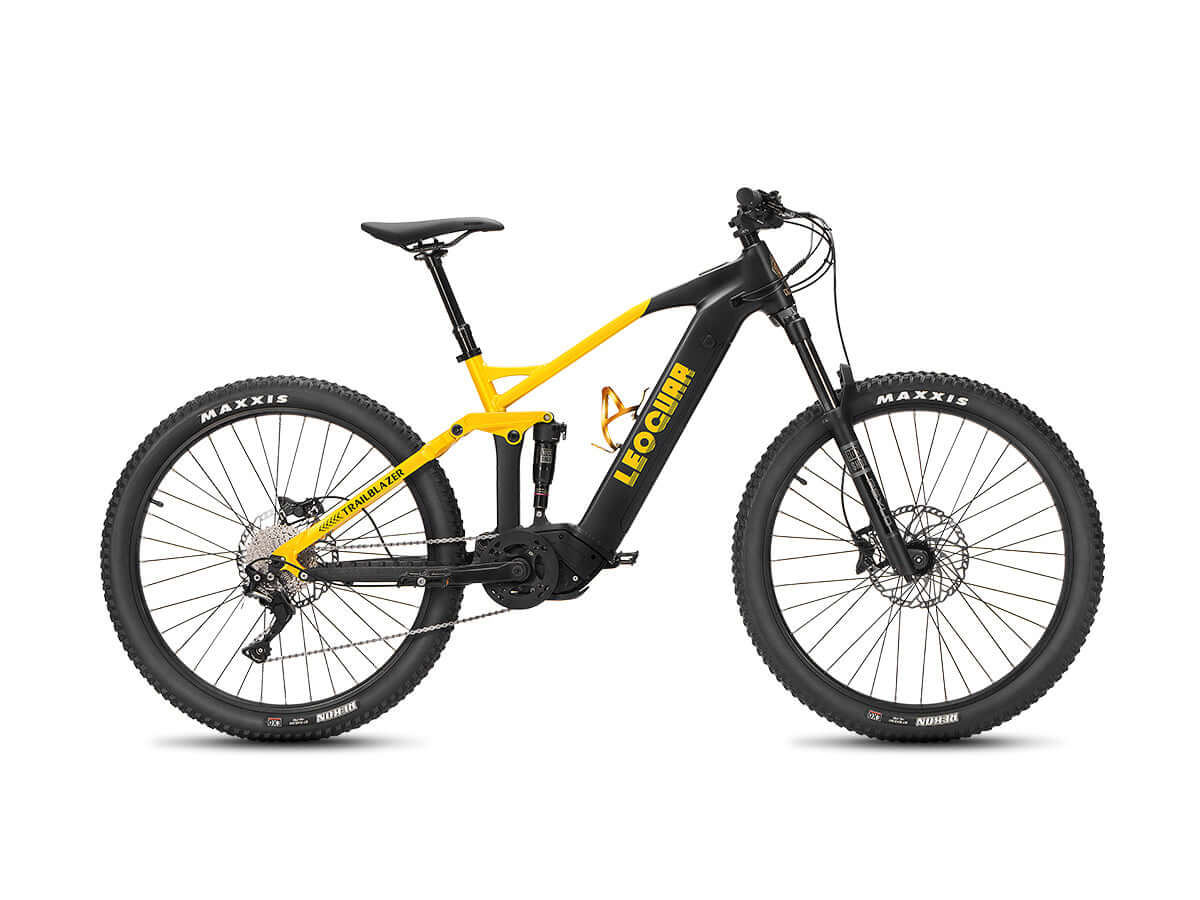
500W vs 1000W eBike: Power & Speed Comparison Guide
The Core Dilemma
New buyers often face a tough choice between a 500w ebike and a 1000w ebike. More power sounds great, but is it always better? The answer is no. The best motor isn't the one with the highest number, but the one that matches your riding style, local terrain, legal needs, and budget perfectly.
This guide cuts through marketing hype and tech talk. We'll show you the real differences between these two power levels in everyday use. You'll learn how they affect speed, hill climbing, battery life, and handling, so you can make a smart choice based on your actual needs.
Quick Verdict at a Glance
Here's a fast comparison for those who want the basics first.
| Feature | 500W E-Bike | 1000W E-Bike |
|---|---|---|
| Best For | Commuting, casual riding, balanced performance, legal compliance | Maximum power, steep hills, heavy loads, thrill-seekers (often for off-road use) |
| Top Speed | Typically limited to 20-28 mph by law | Can be faster, but often legally restricted or classified as a moped |
| Acceleration | Smooth, controlled, and predictable | Rapid, aggressive, and powerful from a standstill |
| Hill Climbing | Good for most moderate hills; requires rider effort on very steep grades | Excellent; maintains speed on steep hills with minimal rider effort |
| Battery Efficiency | More efficient; generally provides longer range for the same battery size | Less efficient; drains the battery faster, resulting in shorter range |
| Weight | Lighter and more nimble | Heavier, less agile, and harder to lift |
| Cost | More affordable | More expensive, both in initial purchase and potential maintenance |
| Typical Legal Class (US) | Class 1, 2, or 3 | Often falls outside the 3-class system; may require registration |
Understanding Wattage
You need to know what wattage means for your ride before comparing models. A motor's watt rating measures its power, which affects how much work it can do. This impacts acceleration and hill climbing more than top speed.
Not all watt ratings work the same way. Manufacturers talk about both nominal and peak power ratings, and you need to understand both.
Nominal Power is the steady power the motor can maintain for long periods without getting too hot. A 500w ebike delivers 500 watts continuously, giving you reliable everyday power.
Peak Power is the maximum burst of power for short periods. It helps with quick starts or climbing short steep hills, so a 500w motor might peak at 750W while a 1000w motor could hit 1500W or more.
Think of nominal power as your comfortable jogging pace that you can hold for miles. Peak power is your all-out sprint to catch a bus, with higher nominal wattage giving you a stronger steady pace and higher peak wattage delivering more explosive bursts.
In-Depth Comparison
Let's compare how 500w and 1000w motors perform in real-world riding.
Speed and Acceleration
Many people get confused about speed differences. In the United States, laws limit e-bikes to maximum assisted speeds of typically 20 mph for throttle bikes (Class 2) and 28 mph for pedal-assist bikes (Class 3). This means a 500w ebike and 1000w ebike often have the same legal top speed. The real difference is how it feels to reach that speed.
A 1000w ebike gives you instant, thrilling acceleration the moment you hit the throttle or pedal. This feels amazing for experienced riders but can seem jerky or overwhelming for beginners.
A 500w ebike provides smooth, gradual acceleration that feels controlled and natural. The power delivery is predictable, like a regular bike with a strong, steady push, making it perfect for city traffic or crowded bike paths where you need control.

Hill Climbing Ability
This is where power differences become most obvious. Wattage directly measures the motor's ability to do work, and climbing hills is hard work.
A 1000w ebike conquers steep and long hills with ease. It maintains higher speeds on inclines with much less effort from you, making it ideal if your route has challenging hills or if you're a heavier rider.
A 500w ebike handles most moderate hills and urban inclines well. On very steep or long climbs, you'll need to pedal more and won't maintain speed as well as a 1000w model, but for most riders in rolling terrain, it provides a great balance of help and exercise.
Range and Efficiency
More powerful motors use more electricity from the battery. With the same battery size, rider weight, and terrain, a 1000w motor drains the battery faster than a 500w motor.
This means a 500w ebike typically offers longer range. It uses power efficiently, letting you travel farther on one charge, though many factors affect e-bike range including assist level, terrain, wind, and tire pressure.
A careful rider on a 1000w bike can still get good range by using lower power settings. However, the temptation to use that extra power often leads to shorter real-world range.
Weight, Handling, and Cost
The differences go beyond just riding performance.
Weight: High-power motors are bigger and heavier, and they need larger, heavier batteries too. This makes a 1000w ebike much heavier than a similar 500w ebike, making it harder to lift onto car racks, carry upstairs, or move in tight spaces.
Handling: The lighter weight and smoother power of a 500w ebike often feels more nimble and predictable. It handles like a traditional bicycle, while the strong torque of a 1000w motor can make the bike feel less agile, especially at low speeds or for riders not used to it.
Cost: A 1000w ebike almost always costs more. The motor, high-capacity battery, and stronger frame and parts needed to handle the power all increase the price.
Navigating E-Bike Laws
Understanding legal requirements is crucial when choosing your motor power. In the US and many other places, e-bikes are classified into legal categories that determine where you can ride them. The most common system is the e-bike classification system with three classes.
Class 1 motors only help when you pedal and stop helping at 20 mph. Class 2 motors can be activated by throttle and power the bike up to 20 mph without pedaling. Class 3 motors are pedal-assist only with no throttle and stop helping at 28 mph.
Most 500w e-bikes fit into one of these three classes, making them legal on most bike paths and streets where regular bicycles are allowed.
A 1000w ebike often falls outside this system. With power exceeding the common 750W limit in many states, it may be classified as a moped, off-road vehicle, or motor-driven cycle requiring a license, registration, and insurance. Check your state-by-state e-bike laws before buying any e-bike, especially high-power models.
Which Wattage Fits You?
Here are practical recommendations based on different riding scenarios.
For the Urban Commuter
Urban riders navigate city streets, bike paths, and parks with stop-and-go traffic and moderate hills. Range and reliability matter more than raw speed.
A 500w ebike is the best choice here. It provides plenty of power to accelerate quickly at intersections and handle urban hills with smooth power delivery that's safer in traffic. It's typically legal on multi-use paths essential for commuting, and its better efficiency means less worry about getting home on one charge.
For the Thrill-Seeker
These riders want maximum performance with rapid acceleration and the ability to conquer steep hills without effort. They may use the bike mainly for off-road fun on private land.
This is where the 1000w ebike shines. It delivers thrilling power that makes every ride an adventure and can easily carry heavy loads or power through challenging terrain. However, these riders must understand legal restrictions and be ready for a heavier bike that needs more skill to handle safely.
For the Long-Distance Explorer
Long-distance riders take weekend journeys on country roads and rail trails. Their main goal is covering maximum ground on a single charge with a balance of assistance and efficiency.
A 500w ebike is often better for this purpose. Its superior energy efficiency is most important for maximizing range, and a smart strategy is investing in a 500w ebike with an extra-large battery. This combination provides much greater total range than a standard battery on a power-hungry 1000w motor.
Our Final Recommendation
The choice between 500w and 1000w e-bikes is a trade-off between balanced utility and specialized power.
The 500w ebike is the versatile all-rounder offering a great blend of usable power, efficiency, nimble handling, and legal compliance. For most riders from daily commuters to weekend explorers, it hits the sweet spot with all the assistance needed for enjoyable and practical rides.
The 1000w ebike is a specialist tool built for riders with specific needs for maximum power. Whether for extreme hills, heavy loads, or thrilling acceleration, this performance comes with significant compromises in weight, handling, cost, and legality.
The best bike is the one you'll ride most. By honestly assessing your daily routes, riding style, and local laws, you can confidently choose the power level that will best serve your needs.
Frequently Asked Questions
Can a 500w ebike handle steep hills?
Yes, a 500w ebike can handle most moderate to steep hills, though you may need to pedal more on very steep grades. For most urban and suburban terrain, 500w provides sufficient climbing power while maintaining good battery efficiency.
Is a 1000w ebike legal to ride on bike paths?
It depends on your local laws. Many 1000w ebikes exceed the 750W limit for standard e-bike classifications and may be considered mopeds, requiring registration and potentially prohibiting bike path use. Always check your local regulations before purchasing.
Which motor size gives better battery life?
A 500w motor typically provides better battery life because it uses less power than a 1000w motor. However, actual range depends on factors like battery size, terrain, rider weight, and how much assistance you use during your ride.
Are 1000w ebikes much heavier than 500w models?
Yes, 1000w ebikes are generally heavier due to larger motors and the bigger batteries needed to power them effectively. This extra weight can make them harder to lift, transport, and maneuver, especially for smaller riders or those who need to carry their bikes upstairs.
Should beginners choose 500w or 1000w ebikes?
Beginners should typically start with 500w ebikes because they offer smoother, more predictable power delivery that's easier to control. The gradual acceleration and lighter weight make them more forgiving while learning, and they're more likely to be legal for bike path use.







































Leave a comment